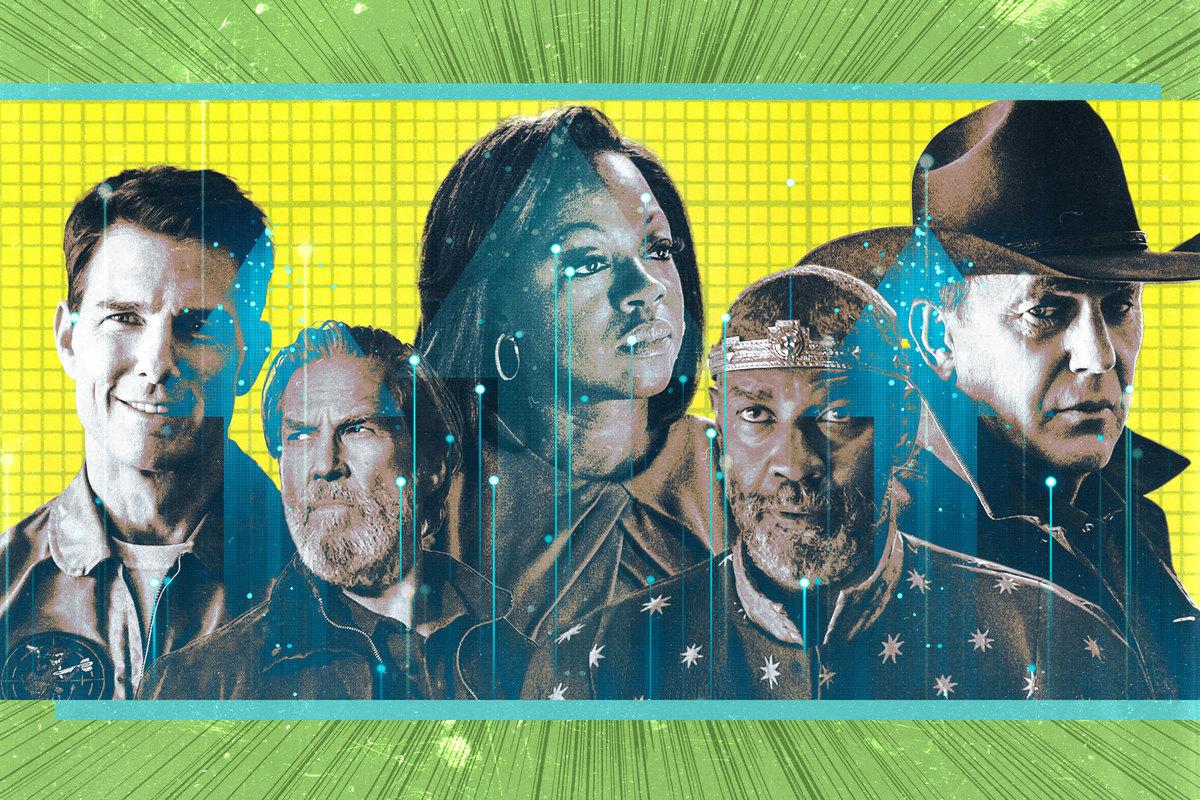The Golden Age of the Aging Actor
Tom Cruise in ‘Top Gun: Maverick’ isn’t the exception—he’s the rule. There’s long been anecdotal evidence that top-line actors and actresses are getting older. Now, The Ringer has the data to back it up.Like its predecessor, Top Gun: Maverick is a movie about sweaty beach sports, awkward sex scenes, and dogfights with enemies of uncertain national origin. More so than the original, though, it’s also about aging. Maverick, a trainee in Top Gun, is now an instructor, regarded as a fossil, an old-timer, the last of his kind. Tethered to the past, he’s told that he’s going to get grounded as the guard changes not just to the next generation of pilots, but to uncrewed drones. He teaches his students that “Time is your greatest enemy,” a lesson hammered home by his old frenemy Iceman’s struggle with cancer. “It’s time to let go,” Iceman informs him. “I don’t know how,” Maverick replies.
All of this seems to make the movie a metaphor for film stardom. Tom Cruise, who first played Maverick when he was 23 and reprises the role in his late 50s, is a household name who hails from an era when there was such a thing, and when people, not IPs, were the biggest box-office attractions; he’s “Hollywood’s Last Real Movie Star,” as a recent New York Times feature dubbed him, or “The Last Action Hero,” as Ringer contributor Noah Gittell did. It may be true that Cruise’s kind of big-screen (or any-screen) star is “headed to extinction,” to borrow a phrase from Maverick’s boss, rear admiral Chester Cain (Ed Harris). But even if, as Cain says, “the end is inevitable,” Hollywood hasn’t let go of aging actors just yet. In fact, it’s clinging ever more tightly to them.
In the past 20 years—and particularly the last 10 to 15—the average age of actors appearing toward the top of the bill in film and TV projects has risen significantly. Whereas the star, or the top two or three stars, of the typical movie or TV series released in the closing decades of the 20th century was typically in their late 30s—several years older than the median age of the United States population at the time—today’s average actor age has reached the mid-40s and is steadily climbing toward 50. Actors who became fixtures on big screens and small in previous decades haven’t given way to new blood as quickly as was once customary. As a result, Hollywood’s leading men and women of today bear a strong resemblance to the leading men and women from the ’80s, ’90s, and 2000s after a trip to the beach from Old—except, of course, for the fact that actors like Cruise (who’ll turn 60 next week) don’t always look their age. The graying of actors—the ones with their natural hair colors, at least—appears to be the product of a confluence of factors that reflect the fracturing of culture in the post-monoculture age, the industry’s gravitation toward franchises and sequels, shifts in audience demographics, efforts to promote more inclusive casting, and a growing range of options for maintaining a more youthful appearance.
Top Gun: Maverick features 50-somethings Cruise, Jennifer Connelly, and Jon Hamm; 62-year-old Val Kilmer; and 71-year-old Ed Harris. The movie also makes space for a smattering of 30-somethings, led by Miles Teller, Glen Powell, and Jay Ellis (who turned 40 after filming finished), but the oldsters are the stars. Audiences have happily turned out to see them: The movie opened big at the box office over Memorial Day weekend, and its appeal has proved resilient in subsequent weeks. The movie has surpassed a cumulative gross of $500 million domestically and $1 billion worldwide, and although COVID concerns kept many older film watchers away from theaters during the peak of the pandemic, 55 percent of people who bought tickets to Top Gun in its opening weekend were over 35.
In this era, the average age of Top Gun’s top two actors hardly stands out. Consider the duos associated with other recent, high-profile releases such as Coming 2 America (Eddie Murphy and Arsenio Hall) or Only Murders in the Building (Steve Martin and Martin Short); the aged (and sometimes digitally de-aged) ensembles of The Irishman or the just-concluded Grace and Frankie; or the leads of Star Trek: Picard (Patrick Stewart) or Hacks (Jean Smart). The Taylor Sheridanverse that’s taking over TV features lead actors who range from their 50s to their late 70s: Kevin Costner, Sam Elliott, Tim McGraw, Faith Hill, Harrison Ford, Helen Mirren, Jeremy Renner. Heck, an increasing percentage of movies have had “Old” in their titles: Not only Old, but also All of the Old Knives, The Old Way, and Old Henry, just since the start of 2021. On TV, there’s the almost too on-the-nose The Old Man, the new FX/Hulu series featuring 72-year-old Jeff Bridges and 76-year-old John Lithgow.
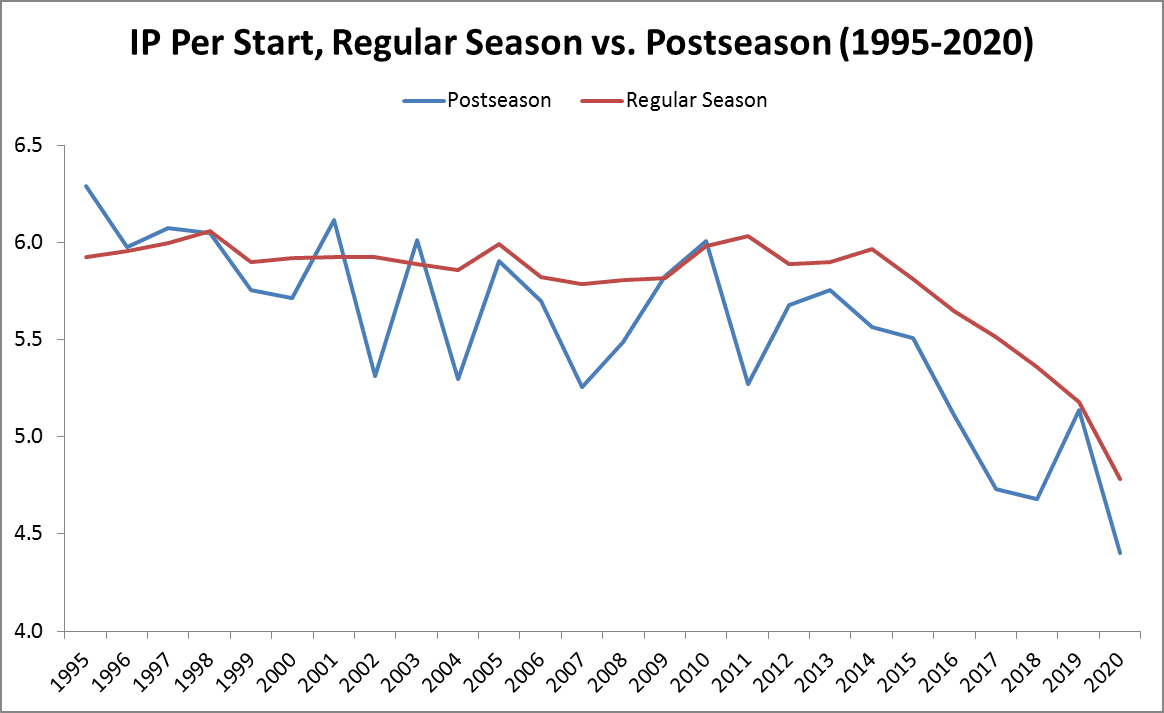
Granted, aged actors gracing the screen is not a new phenomenon, and neither is naming movies and TV shows with the word “Old.” (Old Yeller was only five years old, but the Grumpy—and Grumpier—Old Men were getting up there.) However, our analysis of IMDb data shows that this apparent aging of actors isn’t just anecdotal. The graph below displays the average age (at time of release) of the top-listed actor, top two listed actors, and top three listed actors in movies produced since 1980 that have garnered at least 1,000 IMDb user ratings (a really low bar cleared by 3,000 to 4,000 movies per year worldwide, including streaming releases).
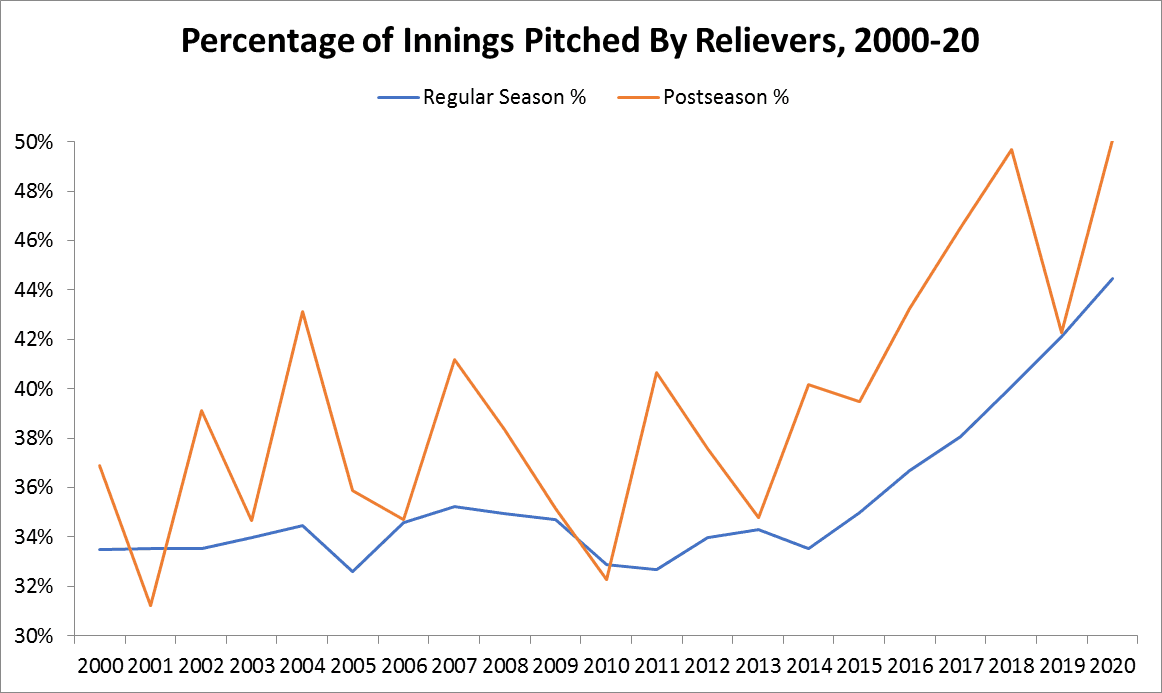
The same pattern appears in all three, as it does if we focus on more exclusive samples of movies with at least 10,000 IMDB user ratings (roughly 200 titles per year) …
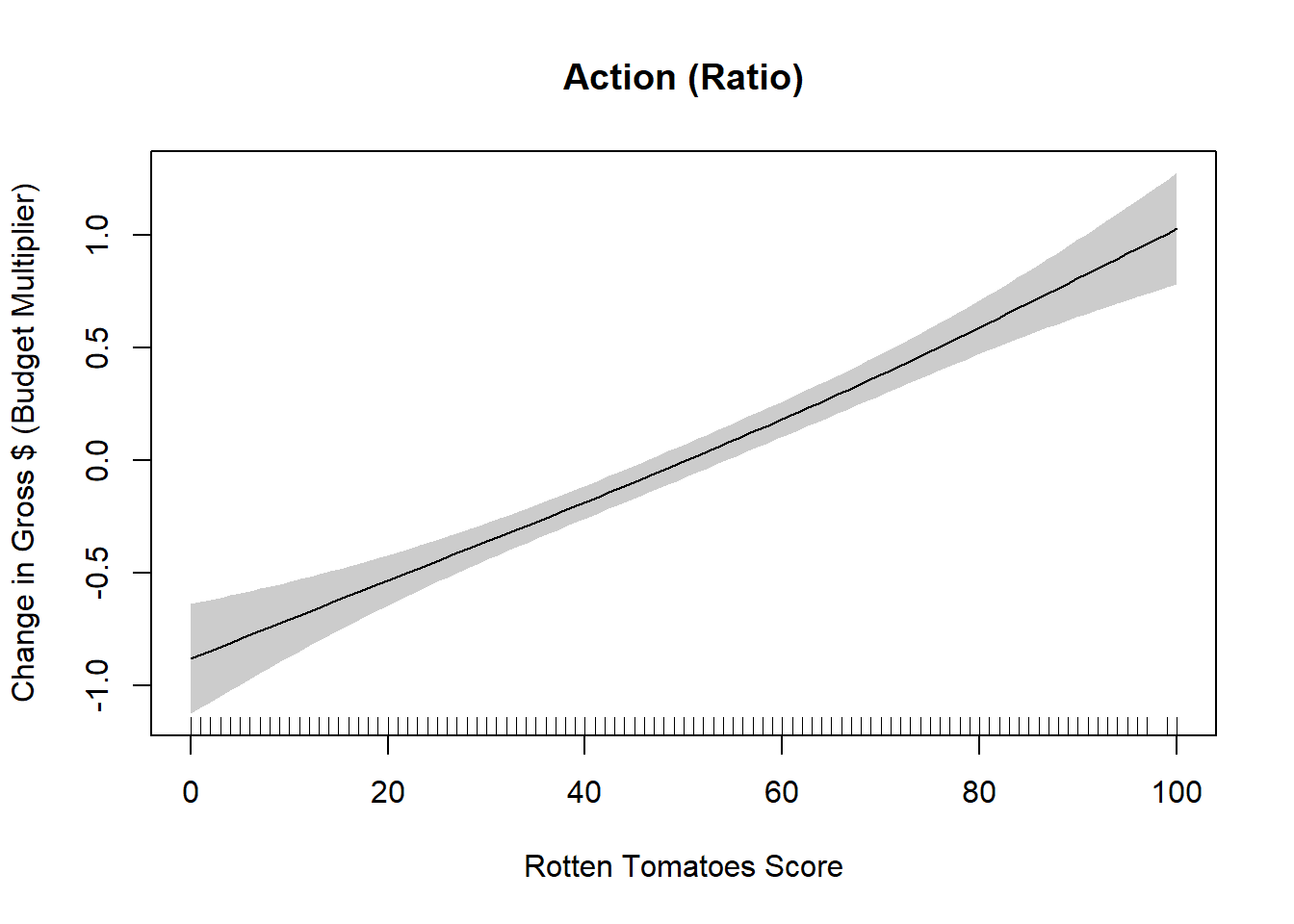
… or non-animated movies released in theaters …
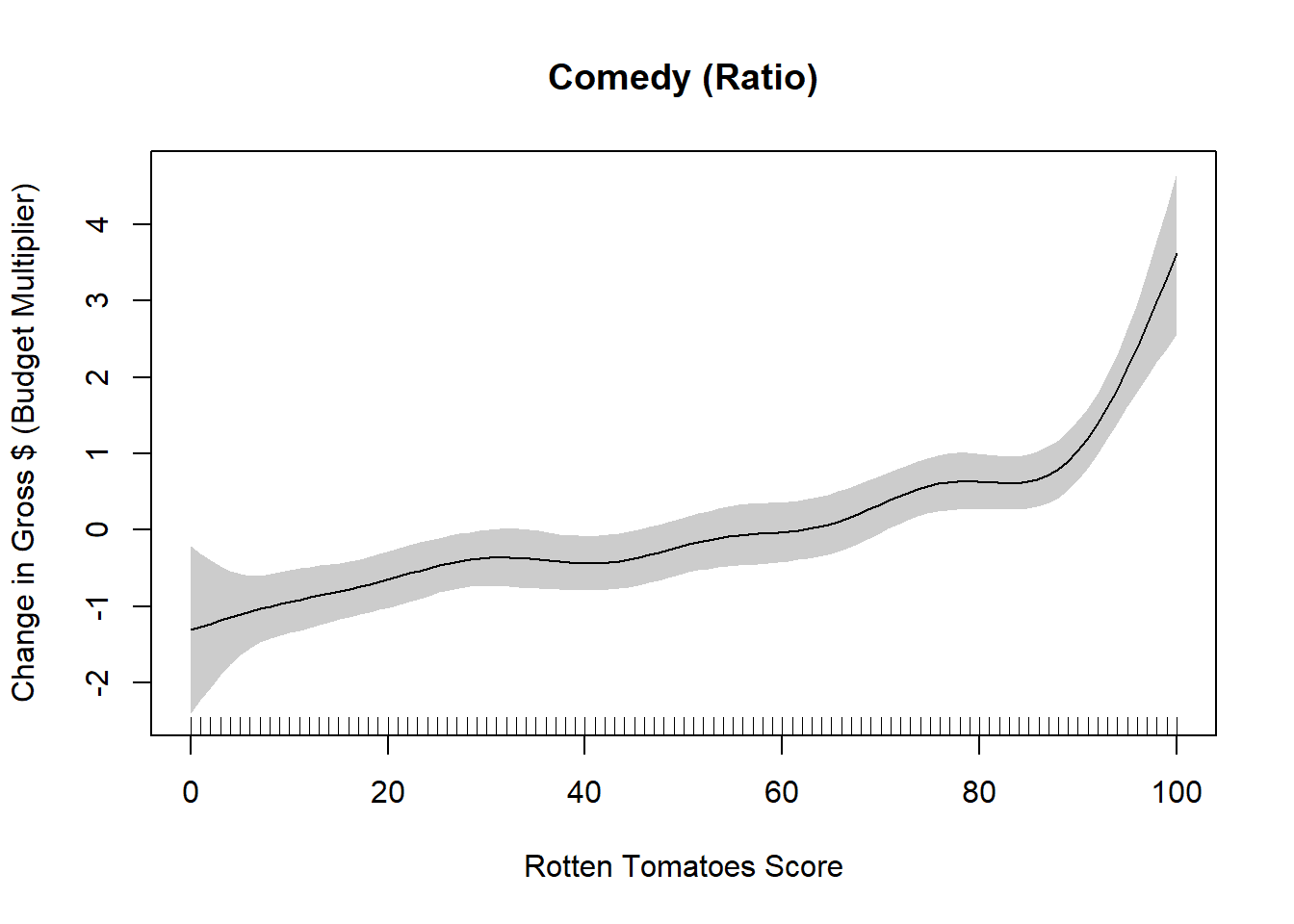
… or non-animated movies that made at least $10 million at the box office …
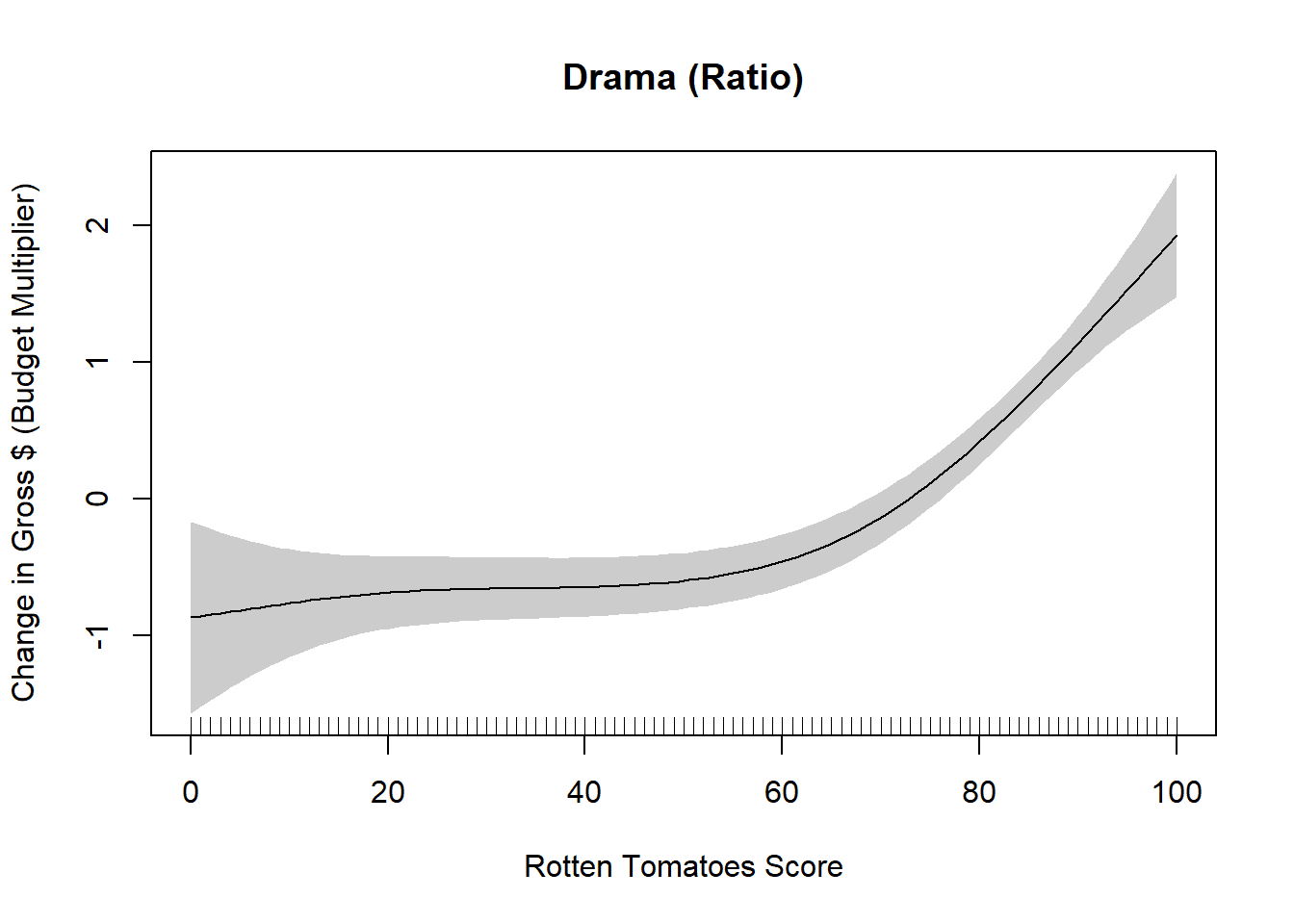
… or the top-grossing movie of each year.
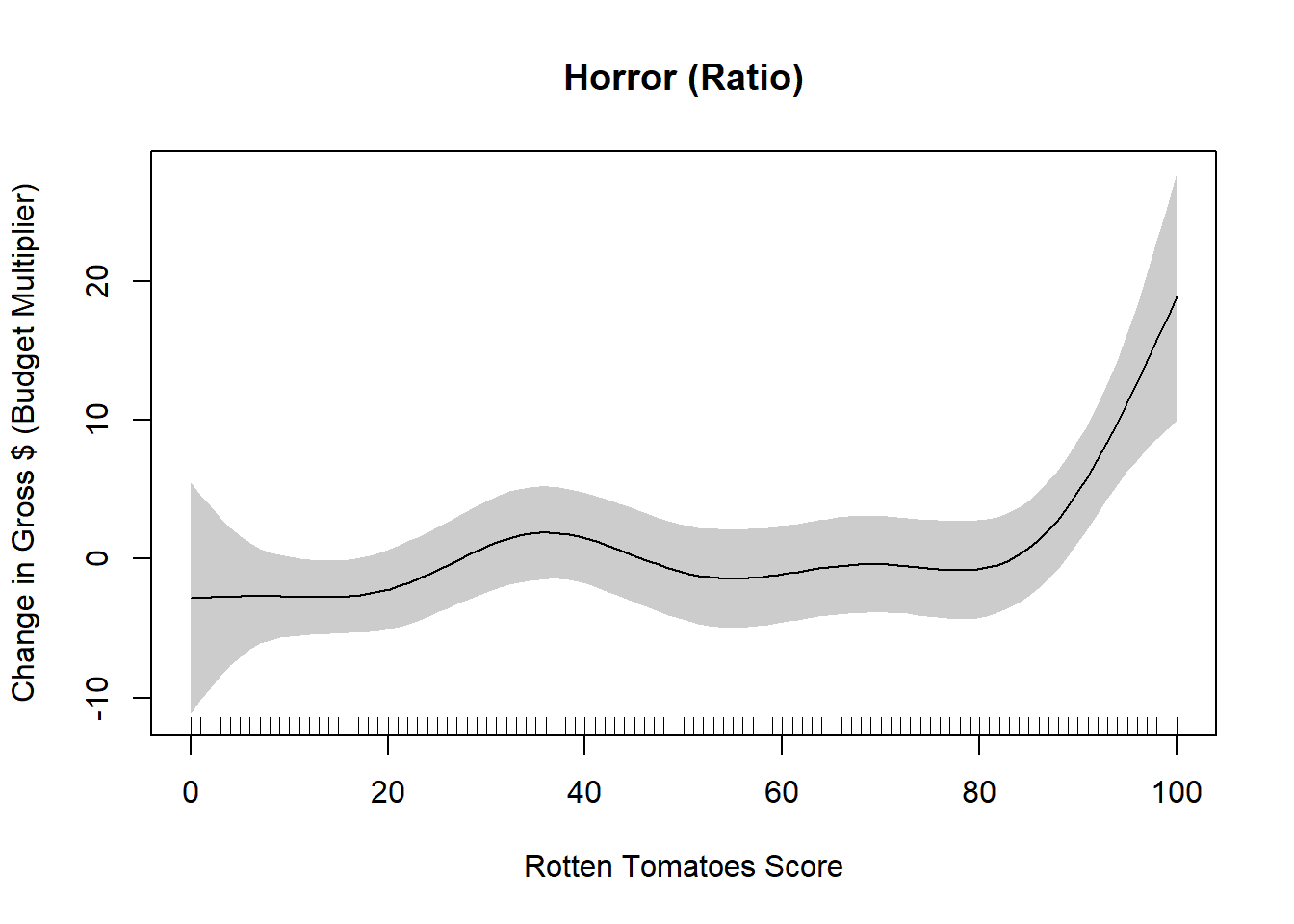
As the average age of actors with prominent parts has soared, the fraction of movies in which at least one of the top two listed actors is over 60, and the fraction in which at least one is under 30, have correspondingly increased and declined, respectively:
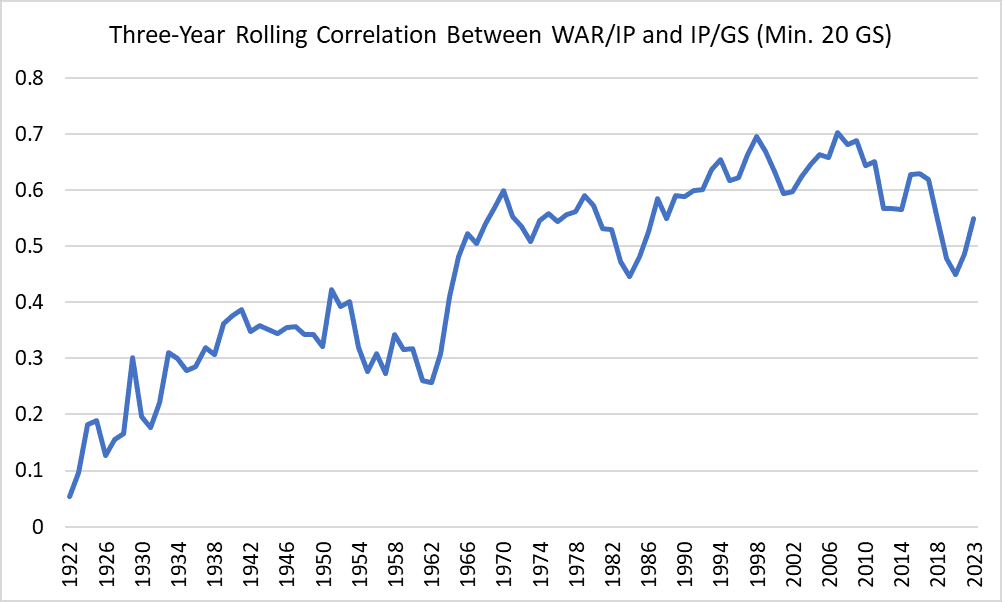
And while the aging of male action stars—the Cruises, Craigs, Keanus, Neesons, and Stallones—is among the most visible manifestations of the trend, it seems to span multiple genres.
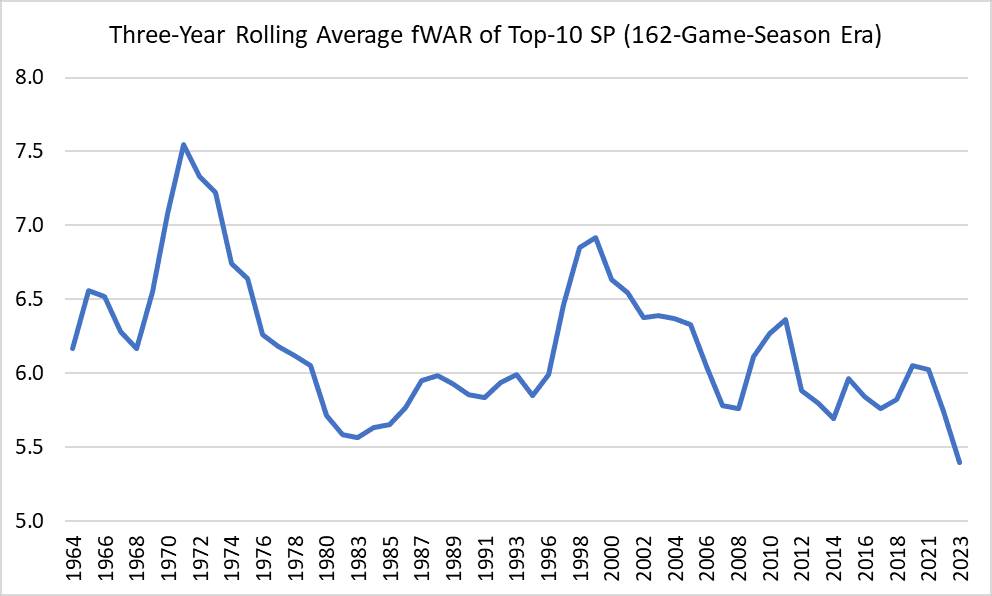
Recent releases have more missing birthdates on IMDb, as do younger actors, but that can’t skew the stats enough to account for these visuals. Essentially, actors who rose to prominence in past decades have yet to retire or be vaudeville hooked out of the frame, and the youngsters and understudies who might have been expected to succeed them haven’t really arrived the way their predecessors did. The chart below, a kind of aging curve for actors, shows how prolific actors born in each of the 20th century’s five 20-year buckets collectively were as they aged. The most recent cohort, which would be in its early 20s to early 40s now, is on a much less productive trajectory than the generations born between 1940 and 1960 or between 1960 and 1980. (For reference, there are more movies made than ever now, across all platforms and even after limiting to 1,000 or more IMDb ratings, though there’s been a decrease in theatrical releases over the past decade, which began prior to the pandemic.)
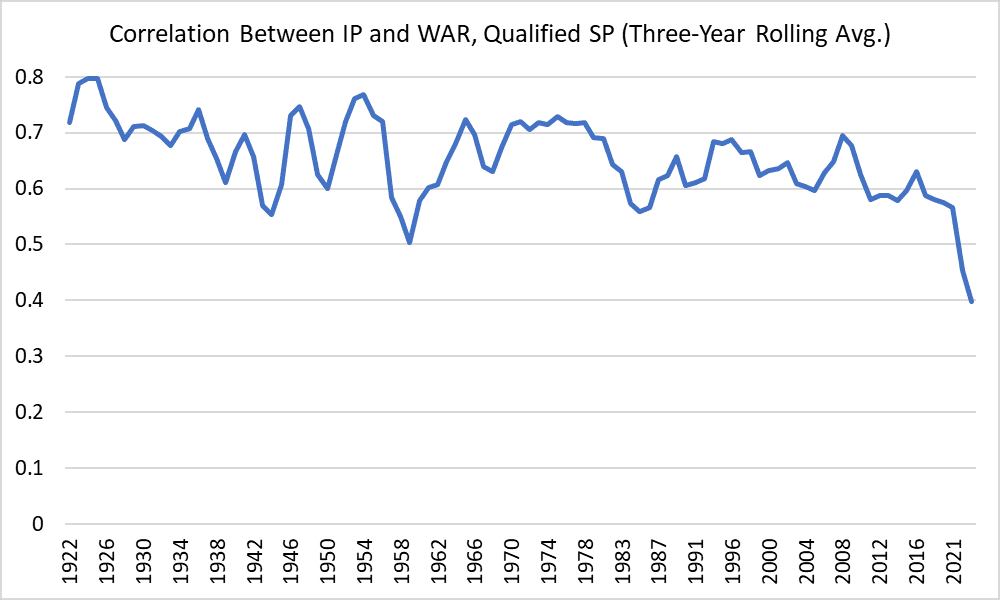
The top two actors from the top-grossing movie of each year of the 1990s went on to appear in 185 movies from 2000 to 2009, and 129 from 2010 to 2019. The top two actors from the top-grossing movie of the 2000s went on to make only 101 movies from 2010 to 2019. So not only did the ’90s stars nearly double the next-decade output of the 2000s stars, but the ’90s stars were still more active two decades after their box-office heydays than the 2000s stars were one decade later. “There’s just greater longevity, frankly, of the people who are acting,” says Bruce Nash, founder of movie-industry database The Numbers. The most bankable actors, per his site’s current ranking, are Robert Downey Jr. and Sandra Bullock, both 57. But which is driving the trend: movie stars, or the movie business? Not to quash the suspense, but you know the drill: The answer is always “a bit of both.”
Ask industry sources, and you’ll get little pushback on the finding that lead actors, on average, are older than they used to be. (And not just in the sense that everyone who’s still living is older than they once were.) “People in Hollywood talk about this all the time,” says Matthew Belloni, founding partner and entertainment reporter at Puck (and host of Ringer show-business podcast The Town). Nash adds, “It does certainly feel as though we do have that trend.” Casting director Mike Page confirms, “It definitely does track.” And Joshua Lynn, president of Piedmont Media Research, says, “It’s definitely true, you see the same names now that you did 15-to-20-plus years ago on the list of bankable stars.” The question is why this has happened—and on that topic, you’re liable to hear a range of responses.
One common hypothesis pins the blame for younger actors’ failure to reach the same heights of bankability on the decline of the monoculture. “The fracturization of the culture means it’s much more difficult to launch stars,” says Belloni. “You look at what’s going on with the Top Gun guys right now. In a previous generation, Miles Teller, Glen Powell, maybe Jay Ellis, those guys would all be stars that could be the center of their own movie now. But now, not really.” (Unless, that is, it’s a Marvel movie—but we’ll get to that.) As Page puts it, “It’s harder to establish these megastars now, because so few people are viewing the exact same content.”
In other words, actors of Cruise’s vintage, who came of age as actors and celebrities in a pre-internet age with fewer entertainment options and less siloed media diets, attained a level of cultural penetration that would be far more difficult for any actor to replicate now. Members of that generation who built their public profiles in a more fame-friendly era may be better positioned to cut through the static of competing people and products than those who didn’t debut or break big early enough to establish that foothold. Consequently, the former may be more able—or perceived as more able—to attract an audience on the strength of their reputation, which would make them more in demand. “You’ll keep seeing the same names over and over, because they happened to exist at a time when ‘movie stars’ were a more important thing to our culture than they are now,” Lynn says. Whether you noticed or not, Neeson has pumped out 24 action movies since starring in Taken in 2008, when he was 55. Another ’90s star, Adam Sandler, has made 22 non-animated movies since the start of 2008—including more comedies than he had in his whole career up to that point—most of which were part of lucrative Netflix deals.
Some sources suggest that somewhat paradoxically, the greater ease of access to celebrities today may diminish their movie-star cred. Jeff Bock, senior media analyst for Exhibitor Relations Co., says, “Part of the mystique of being a larger-than-life movie star resides in the exclusivity of engagement with audiences. … Even though fans have more access [to younger stars], oftentimes it diminishes that unique bond one forms with consumers.” Belloni echoes that sentiment. “We can see Miles Teller all over his wife’s Instagram every day. And we can see him tweeting about the Phillies, and we can see him in all the paparazzi shots and on our TikTok feeds. And there’s nothing special about seeing Miles Teller in a movie anymore. Whereas … there [were] only a couple places to see Arnold Schwarzenegger, or Tom Cruise … or any of these guys that are considered action stars still today.” The social-media-driven “commoditization of actors,” Belloni believes, has “really, really diminished the ability to create new stars.”
Perhaps that’s partly because the current up-and-comers who might be movie-star material are less likely to inspire, or even aspire to inspire, the same sort of fandom as stars in previous eras. “There is a rising generation—more than one, really—of entertainment consumers that isn’t as committed to narrative entertainment as the generations before them,” says film historian and author Mark Harris. “Maybe they’re gamers, or maybe what they really enjoy is TikTok, or maybe it’s something else, but a generation can’t generate stars if it doesn’t really love the medium that creates and accommodates stars.” At the very least, the strain of stardom that newer media spawns may not look like yesterday’s flavor; the modern model may be closer to Kardashian than Cruise.
Even so, some actors still covet Cruise-ian cachet. (Per the Times, Powell told Cruise, “I’m trying to be you.”) They may just lack the avenues to achieve it, thanks to what Nash identifies as a “gap between the regular movies and the big blockbusters,” the latter of which are dwindling in number The remaining few, he adds, “come in, increasingly, the same mold. Really, what you’re seeing are superhero movies, [and] there’s not a lot of opportunity for people to become superhero movie stars.”
That increasing emphasis on franchise-based blockbusters has come at the expense of some of the old pathways to prominence. “There [are fewer] studio movies now than ever before, and the indie movie scene is pretty small and not as significant to Hollywood as it used to be, which allowed exciting new faces/voices into the mix,” Lynn says, adding, “There are just [fewer] opportunities for new people to suddenly emerge and lead a major film and then become stars, leading to more opportunities to lead other films subsequently.” To return to Teller: “In a previous generation, he would have the opportunity to do a mid-budget studio thriller, rom-com, something that would test his allure as a movie star and the ability to open a movie,” Belloni says. “And those movies are just not happening.”
Now, Lynn says, there are at most three routes to traditional movie stardom. You can rise from obscurity to star in a film from a respected studio director who became a big name in the ’80s or ’90s; you can earn critical acclaim from a series of smaller movies and then make the leap to Marvel, Star Wars, or another sci-fi tentpole; or you can cross over from a huge hit on TV, though it’s getting harder to have a Game of Thrones– or Stranger Things–level smash as streaming segmentation intensifies. Oscar Isaac, the Chrises, and Adam Driver, all now in their late 30s or early 40s, needed boosts from major genre movies to reach a new stardom stratosphere. As those movies make up a bigger proportion of the thinner studio release schedule, Lynn says, “You see the same people over and over again in those movies playing the same parts.”
Film data researcher Stephen Follows, who has also observed a 21st-century trend toward older actors, suspects that the thirst for reboots and sequels accounts for some of the aging trend, because recycling material leads to recycling stars. “It’s about films having the same people in them, and people sticking around for longer,” he says. “And therefore, by definition, they’re aging one year a year.” (Cruise, for instance, appears almost exclusively in sequels these days.) F. Andrew Hanssen, an economics professor at Clemson who detected early signs of a widespread aging of actors in a study published a decade ago, notes that whereas during the days of the studio system, studios would spend substantial sums on building up new stars, “The trend of paying large sums of money to relatively unknown actors to appear in a series of films (as Captain America, say)” may have “created an ‘anti-studio’ situation, in which the incentive to develop new actors except in this narrow capacity has become even weaker.”
Of course, the explosion in sequels, prequels, reboots, and remakes—not only in movies, but in other media, giving rise to what researcher Adam Mastroianni has labeled a “pop oligopoly”—stems in part from the fretting about breaking through in a crowded culture, which leads studios to default to the same old names. “The name above the poster is a rarity these days, and because the cost to green-light a blockbuster is an enormous risk for studios, these companies often lean on what has worked previously—sequels and big stars,” says Bock. Last month, Top Gun: Maverick producer Jerry Bruckheimer said as much, remarking, “I still get the same list of 10 men the studios want in a movie. You still get Tom, Leonardo [DiCaprio]. Get one of these big names and you’ve got a good shot at getting a movie made.” Asked for other names, he listed Brad Pitt, who at 58 just related that he’s on the “last leg” of his career; pressed for someone who wasn’t famous last century, he allowed that Hemsworth has “broken through.”
Which isn’t to say that things have to work that way. “Bruckheimer is not wrong in that there are a limited number of actors who can ‘carry’ a movie,” Belloni says. “But I think Hollywood is a little bit to blame here for being risk-averse and not trying certain actors in these roles. … A lot of it is fear that there is such a splintered culture.” Follows also attributes part of the aging effect to “the risk-averse nature of the people commissioning” blockbusters, though he notes that the evidence of actor aging even outside of theatrical releases from major studios “does suggest that it is more of a cultural trend than just the conscious or unconscious decision of 20 people.”
What else could be contributing to that cultural trend? For one thing, this situation isn’t the inverse of Wooderson’s line from Dazed and Confused, in which the actors get older while the audience stays the same age. The audience is getting older also, along with the U.S. population, whose median age is up 8.5 years since 1980. Consequently, catering to middle-aged spectators and senior citizens is more rewarding for the makers of movies and TV. “Older audiences are fueling moviegoing right now,” Belloni says. In 2019, people 60 or older accounted for more tickets sold than any other age group except 25 to 39. And as younger viewers cut the cord and churn through streaming services, cable-connected and deeper-pocketed viewers are making their preferences felt on TV, too.
“You do have to target the older audiences, because they are the ones that are still paying,” Page says, adding, “They’re probably looking more for content and lead characters, lead actors, that are relevant and reflect their lives and experience.” Although Follows has found that the impact of actor age on audience turnout may be overrated, the perception of a link influences studios. “I probably would be more inclined to see Liam Neeson in an action movie, given my age, than Tom Holland,” says Nash, who’s 54. “You see that in romantic comedies as well. It’s not people in their early 20s anymore. It’s people in their 40s, sometimes, and the second chances at romance, and so on, tends to be a little bit more the prevailing force.”
Older characters require older actors—and like Cruise, those actors may seem to defy the ticking clock that Maverick warned about, especially compared to the chain-smoking stars of old (and old-looking) Hollywood. “Actors look young for longer, thanks to advances in exercise and diet (not to mention cosmetic surgery), and can credibly play action heroes or romantic leads at older ages than in the past,” Hanssen says. (Physique-enhancing drugs may play a part, too.) Plus, there’s always the option of airbrushing. “Between both modern medicine and what they can do with digital makeup and things like that in post, you can have stars that are aging out, but you still pretend that they’re age appropriate,” Belloni says. And an aging audience might have an evolving definition of “appropriate.” Page points to a “societal expansion of what sexy is, what vitality is, and getting to see that there’s not necessarily an expiration date at 50, at 60, at 70.” (Which is the theme of Good Luck to You, Leo Grande, a movie released last week that stars the 63-year-old Emma Thompson and includes a much-discussed nude scene.)
Actors aren’t alone here: By historical standards, today’s top politicians, top touring musicians, top tennis players, and top quarterbacks are ancient too. It’s the era of presidential runs by Joe Biden, Donald Trump, and Bernie Sanders; pricey, sold-out concerts by Paul McCartney, Elton John, and the Rolling Stones; unprecedented title totals by Roger Federer, Rafael Nadal, and Novak Djokovic; one-two MVP finishes by Aaron Rodgers and Tom Brady. Just as new racket strings and slower playing surfaces have helped venerable tennis stars stay at a higher level for longer—and, for that matter, as improvements in manufacturing have kept cars on the road for record durations—tuneups to actors’ exteriors have helped them stay on screens and win Oscars at more advanced ages. Jessica Daniels, a Casting Society of America board member and the VP of casting for Walt Disney Television, says, “60 years old now doesn’t look like 60 years old did 20 or 30 years ago, and people are living longer, and so just by virtue of that, I think that we’re all adapting.”
Another factor fueling that change is anti-ageism advocacy by organizations such as the Geena Davis Institute on Gender in Media. Although in theory the extended tenures of legacy stars could prevent a group of more diverse actors from seizing the spotlight, studies show sweeping improvements in representation, at least in front of the camera. “It feels like the industry is … moving in the right direction as far as diversification in many areas, and I think age is one of those,” Page says. Historically, female actors have faced severe age discrimination, and that problem persists; Bruckheimer, when asked to list female counterparts to his bankable Brads, Toms, and Leos, said, “Women are harder. It’s just not that strong a list yet.” However, the trend toward older actors holds true for both men and women, and the age gap between them has seemingly started to shrink (though Top Gun costar Kelly McGillis attributed her absence from the sequel to her age and appearance).
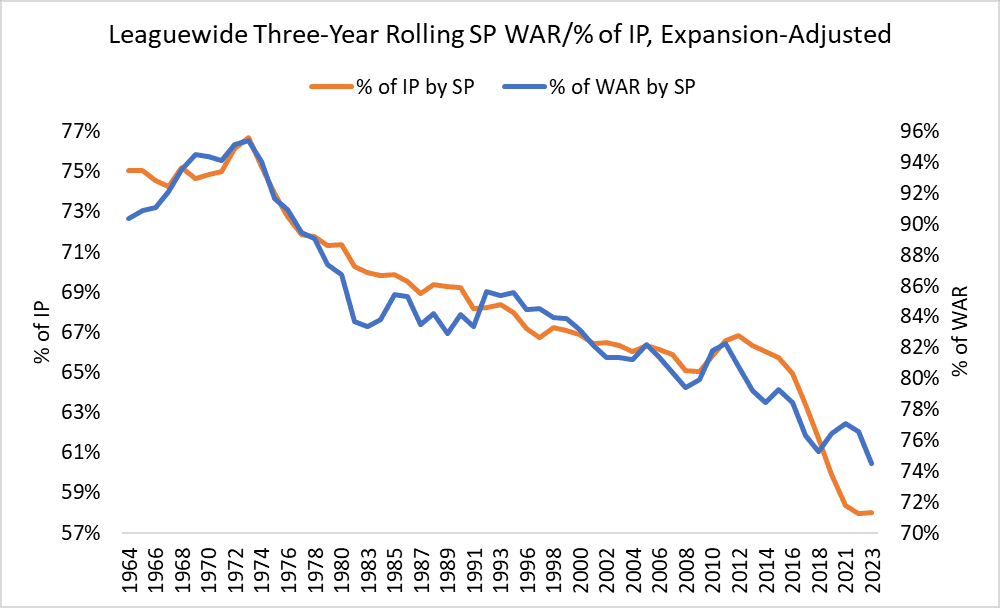
“I definitely think, specifically in television, we are breaking a lot more barriers,” Daniel says. “I think that there is so much more room for not only a diversity and inclusivity of experience, but I do think that there’s an audience that does want to see not only beloved actors that we’ve loved for years, but also just wants to see this experience, wants to see these stories being told.” Although the lines on that graph aren’t close to converging, Nash notes that there’s “not necessarily so much of a bias as there might once have been.”
For the foreseeable future, those “average age” lines may continue their ascent. “With YouTube getting more interest among kids than the state of the Academy Awards, and with streaming fracturing the landscape as we speak even further, I honestly don’t see that changing anytime soon,” Lynn says. The question confronting Hollywood seems similar to the question confronting the ATP Tour as Federer, Nadal, and Djokovic finally age out: Who’s next? “Beyond [Timothée] Chalamet, Holland, and Zendaya, name a movie star under 30.” Belloni says. “It’s tough.” Letitia Wright, Florence Pugh, Hailee Steinfeld, and (soon) Sydney Sweeney may make the most of their Marvel exposure, but in the absence of a deep pool of marquee talent, Page says, “Everybody clamors for the short list of the recognizable names.” Al Pacino anointed Chalamet as his pick to play Vincent Hanna in a potential Heat 2, and Sony sold Uncharted to audiences using Holland’s post-Spider-Man star power, even though his older costar, Mark Wahlberg, was the one whose name helped get the movie made. (Wahlberg, now a fanatically buff 51, embodied the older-actors hegemony when in 2012 he replaced the 15-years-younger Shia LaBeouf as the face of Transformers.) But Holland and the Dune duo can act only so much.
Cary Grant, who retired at 62, supposedly said, “Hollywood is very much like a streetcar. Once a new star is made and comes aboard, an old one is edged out of the rear exit. There’s room for only so many and no more.” But what if the old stars won’t relinquish their status until they’re elderly enough for riders in real life to offer them seats? The star of Top Gun: Maverick has two more Mission Impossible movies on the way, but Chester Cain wasn’t wrong; Cruise can’t act forever, and by the time that second flick comes out, he’ll be pushing 62 himself. “There is not going to be another Tom Cruise,” Belloni says. “That era is over.” But the era of old actors has no end in sight.
Rob Arthur is a Chicago-based freelance journalist and data science consultant.
